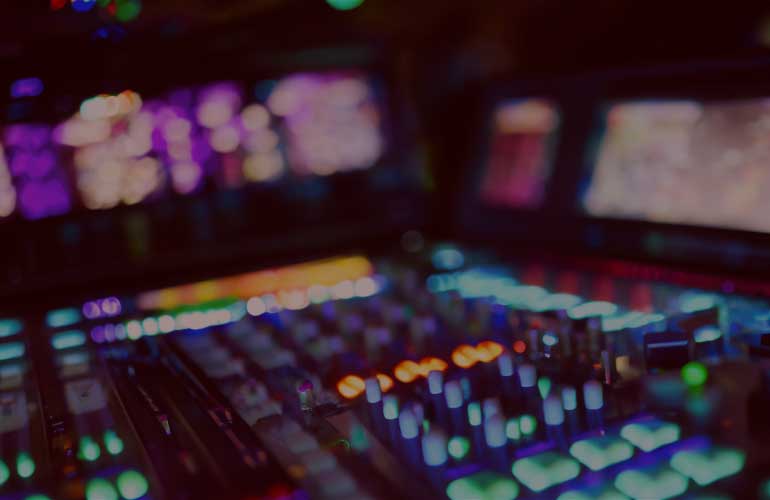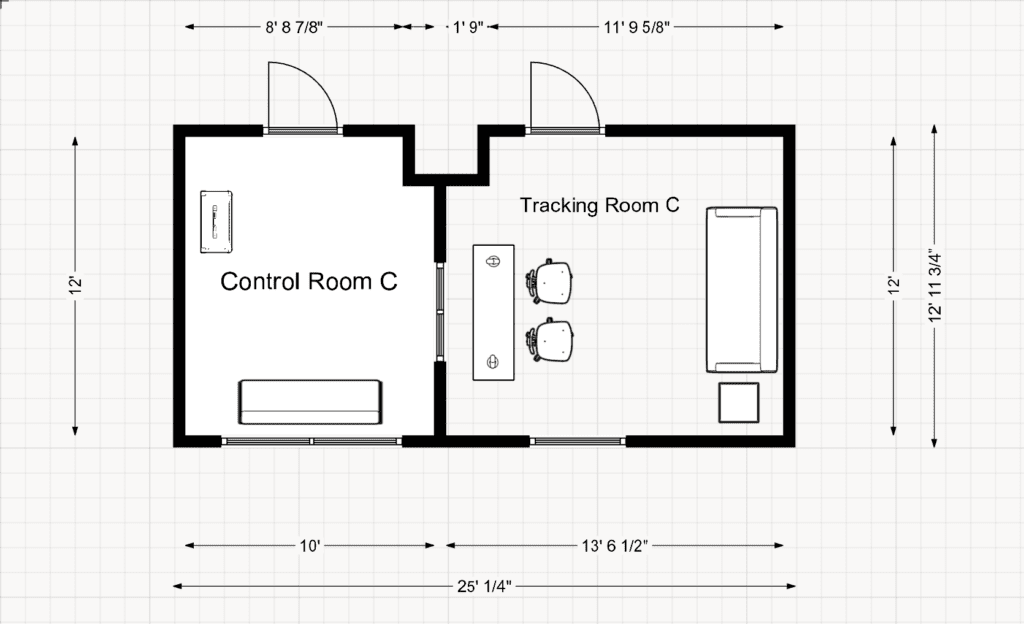
New to mixing music? Well, we are so glad you found this page! Welcome to TMC’s beginner-friendly guide to Music Mixing. Where we’ll be going over everything from the importance of DAW Tools to the Synthesizers we use here at the music studio!
What is Music Mixing?
The art of Music Mixing is used in order to enhance sound, consistency, and audio effects! Mastering the art of Mixing will allow for simple projects to easily contain over 100s of individual tracks together to sound cohesive all while making a one-of-a-kind sound. This technique takes hours of practice and years to master, start experimenting now and who knows what creative sound you can make!
DAW Tools
The first step of mixing requires DAW tools. A digital audio workstation (DAW) allows for electronic device or application software for recording, editing, and producing audio files. Here at TMC, we use Pro Tools, Ableton Live Suite & Logic Pro for mixing and mastering. but for beginner-friendly mixing, we recommend starting off with:
- Ableton Live Lite
- Garage Band
Learning how to properly use your DAW tools is what is going to be key to getting you into creating great-sounding music.
Easy Tips to Follow When Mixing
It’s important to remember that music production requires skill and a special taste for sound. Start off by making sure you are not going overboard by adding too many instruments or going too heavy on Reverb. Creating the right flow and consistency of sound is key to mixing a masterpiece.
Here are some great tips and tricks that our Team Member Kurtis McNevin recommends:
Mixing & Mastering Techniques
Mixing and Mastering are often overlooked by new producers while starting to produce their own music. Even though they are not as fun as laying down a sweet bass line and drums or composing interesting chords, it is still important to get used to Mixing down your music as you make it. This is to avoid the ever-so-daunting task of mixing down a full-length composition after you’re finished with it. Below I’m going to include tips and examples for both Mixing & Mastering and how to just stay organized in Ableton when composing a piece.
Tip #1 – Grouping
An easy way of keeping your project files organized and more importantly, easy to mix-down, down is by Grouping. Grouping in Ableton means to group tracks together. One way that I use grouping to my advantage in mix-downs is by grouping certain instruments together so I can process them the same way which helps render a better overall mix-down. Some examples of Groups that I have preloaded onto my project files include Drums, Bass, Vocals, SFX, and Instrument Elements. Below is an example of my groups in Ableton Live.

Tip #2 – EQ Everything
One thing that I know seems simple but is often over-looped is to EQ every single track that you have in your project file. For example, if you have a sound in your Bass Group, Low-Passing frequencies that don’t fit into the sub and mid-frequencies is an easy way of reducing muddiness in your tracks. This also applies to something like a hi-hat or clap, where the most important frequencies for that drum hit are in the higher frequencies. Using a High-pass EQ will remove unwanted low frequencies that may be coming from that instrument. Examples of a Low-Pass and High-Pass EQ are below.


Tip #3 – Take a Step Back/ Less is More
Often when producing a song, I find myself in a rush to fill up the sonic field with heavy lows, thick mid frequencies, and clean & crispy highs. Sometimes this process will take hours but at the end of it I always try to take a step back and listen with a fresh set of ears. Whether I take a break from a song for an hour or for 3 days, taking a step back always helps me understand which elements work in the song and which don’t. This can be especially useful when working on electronic music because our brains get so used to the idea of filling up every frequency with a sound that we forget some of the best parts of music are the points where everything is stripped back. Sometimes taking away an element can be more impactful than adding another element.
Tip #4 – If it sounds good, It is good
Something that I am prone to doing is overthinking my mix-downs. An example of this is, finding myself 4 hours into a mix-down of a song that I’ve finished but even after 15 renditions of the song I’ll compare it to a reference track, and something new bugs me. One simple but effective way of avoiding this painstaking process is by not being a perfectionist. If a new set of ears hears it and has no problem with it then you’re in the clear. In my experience over-mixing music can cause it to lose feel and ultimately take away from the song.
Tip #5 – Mastering
While self-masters can be effective to test out how your song sounds on different sound systems, in the end, unless you’re a seasoned master engineer, you’re going to want to send your finished tracks to a master engineer who can properly master them. At the end of the day, the $100-$200 you’ll spend on mastering a track is well worth it because once you release the music, it’s out on the web forever and you want your work to sound good, or at least loud and clean, when you re-listen to it 5 years from the release date. Below is a picture of a simple self-mastering chain that I use when testing out the mix-down on songs.

Studio B’s LIMITED EDITION Moog
Here at TMC, we love to be able to share our instruments, pick any guitar off our wall, and have at it! One of our favorite synthesizers is the Limited Edition Moog. There are only 30 of its kind! Renting Studio B (Production Suite) allows you to use our synthesizer and experiment on your own. This analog synthesizer allows unique voltage, higher pitches, filters, and oscillators. Here is a sneak peek at some of the mixes we have been able to make:



